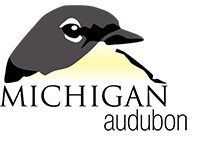Conservation Manager Chad Machinski, M.S., manages the stewardship of MA’s sanctuaries and engaging with our dedicated volunteers ever since. To help you stay connected with the work being done, he will be presenting regular online updates about activities going on at them: birds seen or heard, conservation work, improvements, interesting plants, and more.
Four major events have occurred since my last blog in terms of sanctuary work, and it’s great to have gotten these things accomplished.
CAPITAL CITY BIRD SANCTUARY RIVER CLEAN-UP
In mid-October, Michigan Audubon partnered with Michigan Waterways Stewards to do a clean-up of the Grand River. You could not have asked for a better fall day to do this work! Six of us met at Grand Woods Park, just upstream from Capital City Bird Sanctuary (CCBS) in Lansing. Our team made up of MA staff and volunteers, then split up into two groups, with one group floating down the river with Mike Stout, the president and founder of Michigan Waterways Stewards, on his catamaran and the other group heading over to CCBS to clean the river frontage there. Mike wanted to make sure we got any trash upstream of CCBS to prevent it from eventually coming downstream to our frontage. While trash along the frontage was not significant at first, it did start to add up. Common items picked up were cans and shoes, but we also found car tires, plastic barrels, a tricycle, part of a television, and much more. The catamaran team continued downstream to Delta Mills Park, where all trash was staged for later pickup. We were happy to work with the Michigan Waterways Stewards and hope to do it again!
Check out the Michigan Waterways Stewards November newsletter, where our recent river cleanup effort is proudly featured — celebrating collective action for healthier waterways!
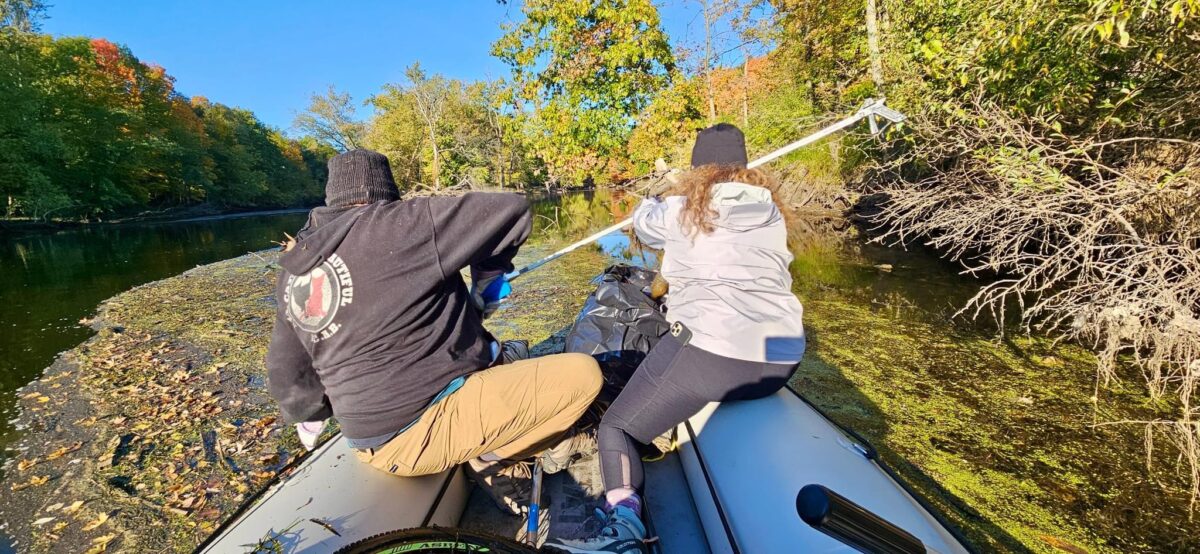
MA staff and volunteers pick up debris from a catamaran on the Grand River near Capital City Bird Sanctuary. Photo by Mike Stout
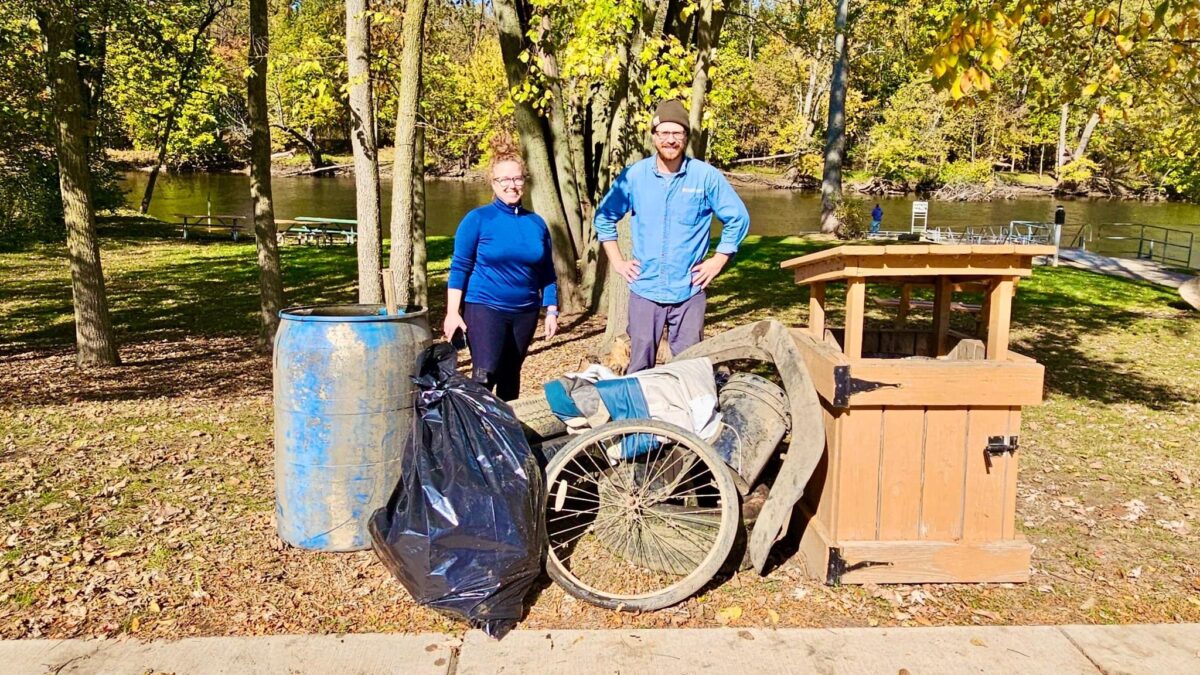
Some of the bigger pieces of debris gathered from the CCBS river clean-up. Photo by Mike Stout
BERNARD W. BAKER SANCTUARY
The passing of mid-October marked the beginning of our prescribed burn season at our sanctuaries. The first burn that took place was an approximately 5-acre burn at the Bernard W. Baker Sanctuary in Bellevue. This burn mostly consisted of a warm-season grassland but also a sliver of forest on a northeast-facing slope with autumn olive in the understory and wetland. As anticipated, the forested section did not burn well, but the grassland burned fantastically. This winter, a mix of native forbs and grasses will be sown in the area to increase the floristic diversity of the site.
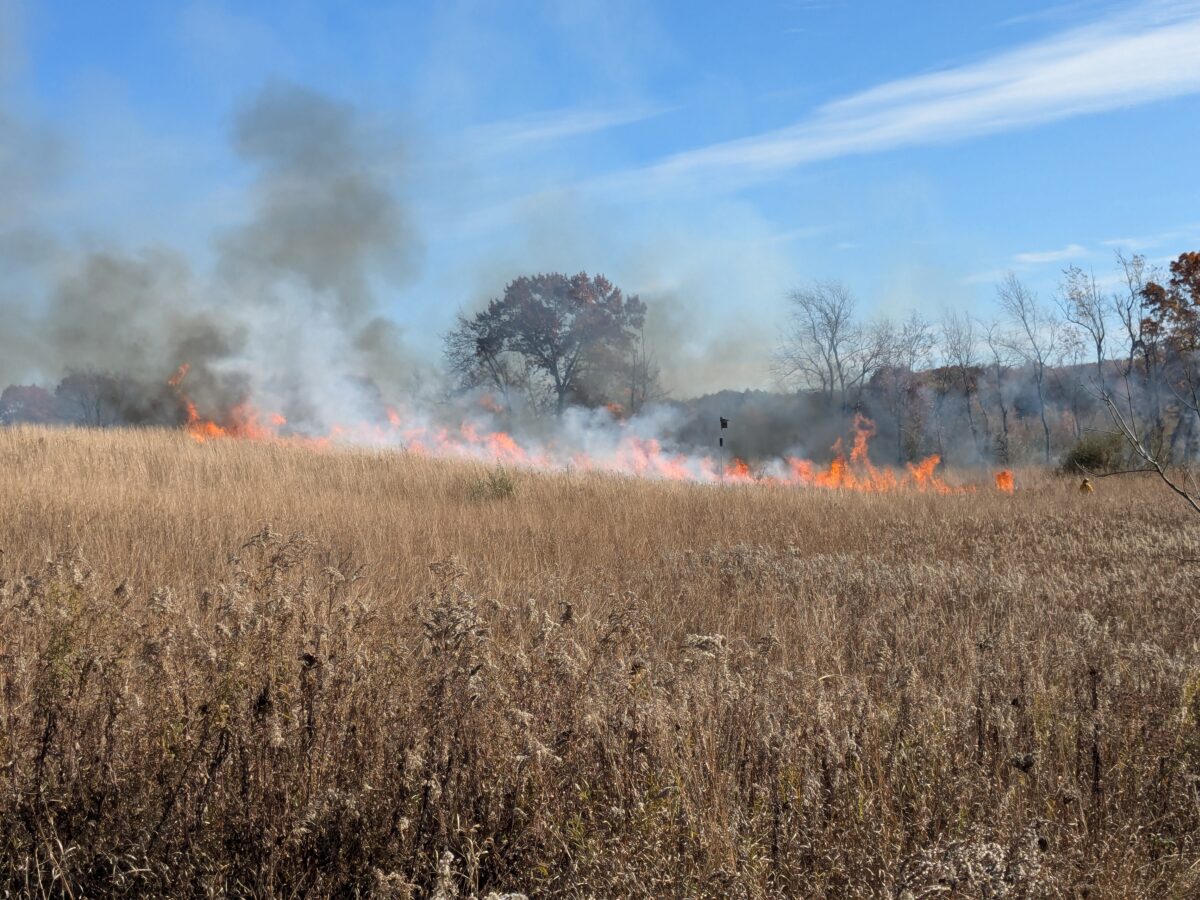
Prescribed burn at Baker Sanctuary on 10/27/2024. Kestrel box is being burned around. Photo by Chad Machinski

A look at the sanctuary following the prescribed burn. Photo by Chad Machinski
OTIS FARM BIRD SANCTUARY
More recently, a prescribed burn at the Otis Farm Bird Sanctuary in Hastings also took place. This burn proved less successful due to several factors. That morning, a heavy dew had settled on the unit to be burned, causing it to take longer to dry out. At this point in the year, the unit is also partially covered in shade for the entire day by the forested edge; this means that moisture is retained and does not sufficiently dry out. Finally, there are several slopes and bowls in the topography of the unit, creating microclimates. Some sections of the unit burned well, and others did not. While the heavy dew and high humidity throughout the day did not aid the burn, ultimately, the management of the unit should be reconsidered. Because the unit is made up of mostly non-native, cool-season grasses, the burn would have been more successful if done in the spring. Next year’s burn will be occurring in a much less complex location and should prove more successful.
MARTHA MOTT SANCTUARY
Lastly, progress at the Martha Mott Sanctuary in collaboration with the U.S. Fish & Wildlife Service (USFWS) has finally gained momentum. In early November, a masticator was brought in to grind up the piles of cut autumn olive that volunteers and I had previously cleared. Additionally, it was able to remove even more autumn olive from the site, further advancing restoration efforts. This work greatly increased our capacity for the year, and it was exciting to show my volunteers the next workday, who were ecstatic to see it. This puts us that much closer to restoring this site to an oak barren natural community. While it’s a huge leap for us, there will still be work to do in this area for many years to come. USFWS will be back next year to treat the re-sprouts of the non-native invasive plants; seeding of native plants will follow, and hopefully, a burn regime can begin. If you visit, you will notice that there has been a great amount of disturbance, and some sections of the trail have been more or less obscured due to this work. Please be patient with us as we work to improve this site for visitors and wildlife.
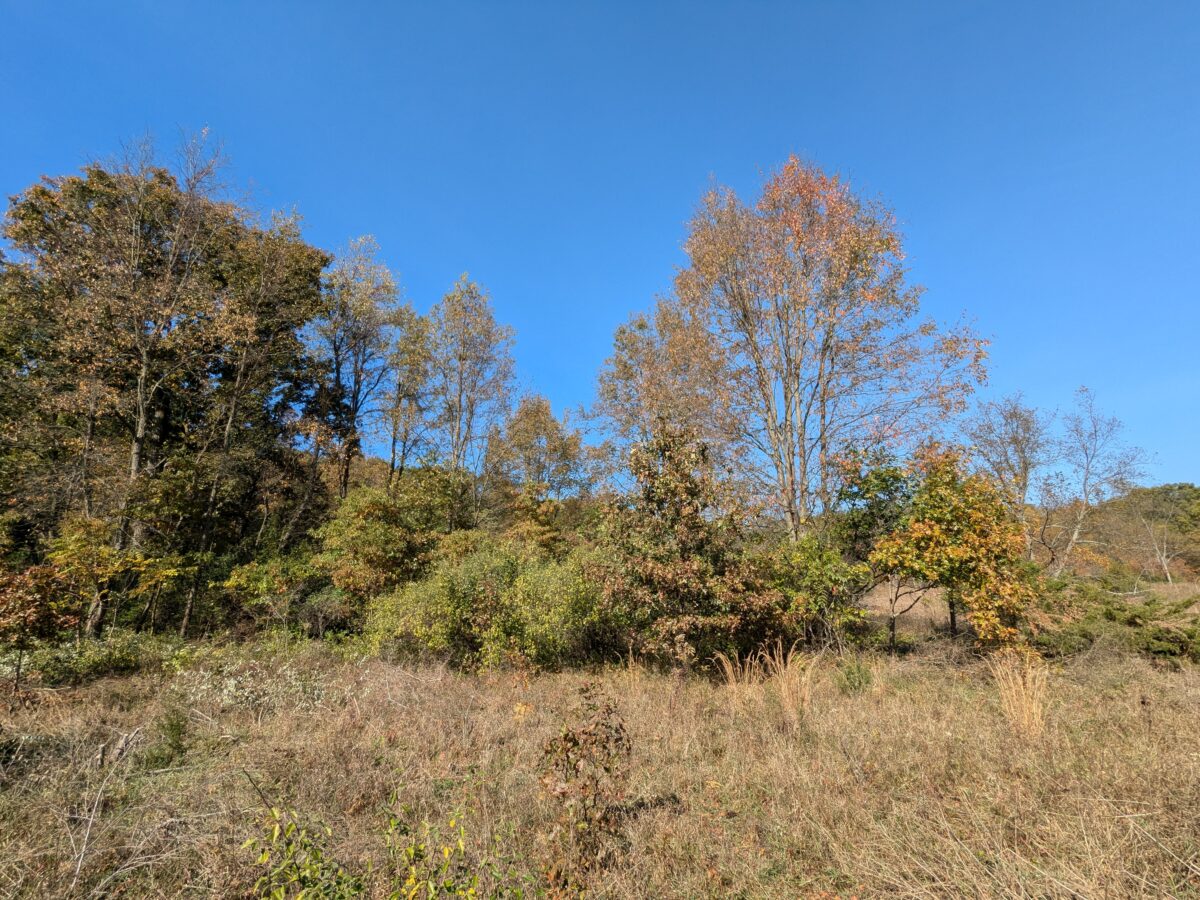
Martha Mott Sanctuary from the south side of invasive peninsula looking north on 10/18. Note that much of the understory is autumn olive and honeysuckle. Photo by Chad Machinski
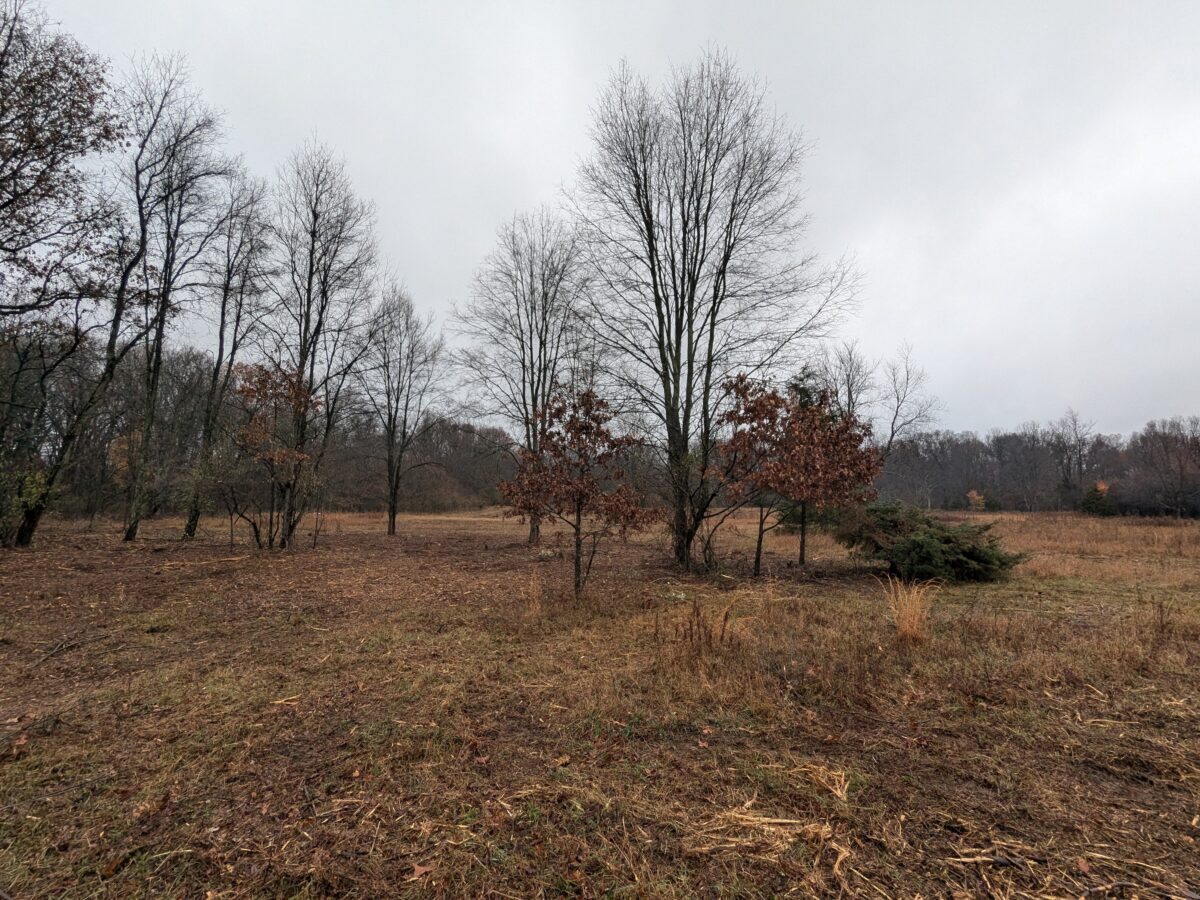
The same view of Martha Mott Sanctuary post mastication on 11/15. Flowering Dogwoods are still present. Photo by Chad Machinski
To learn more about Michigan Audubon sanctuaries, visit michiganaudubon.org/conservation/bird-sanctuaries. If you want to volunteer at a Michigan Audubon sanctuary, please complete the Sanctuary Volunteer Interest Form.
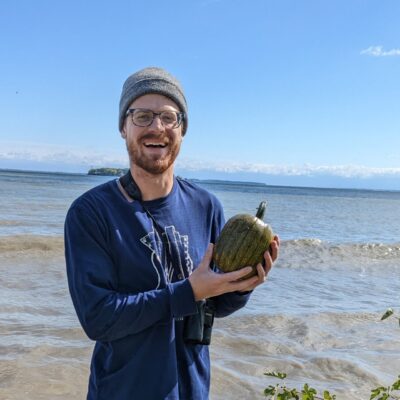
Chad Machinski, MS
Conservation Manager
While Chad’s first love is botany, he doesn’t deny the intertwining nature of birds, plants, insects, and all other organisms we share the world with. His passion for the natural world began in his undergraduate time at the University of Michigan, taking several different forms along the way. His graduate studies at the University of Michigan allowed him to more closely examine the natural communities of Michigan and further understand the complex nature of ecosystems. His work as a Nichols Arboretum Caretaker while in school further enabled him to be directly involved in conservation work as he led workdays removing invasive plant species, performed trail maintenance, and guided tours. Chad can usually be found out in a park in a few ways: binoculars glued to his face, hunched over looking at plants, or flipping logs looking for snakes and salamanders.
